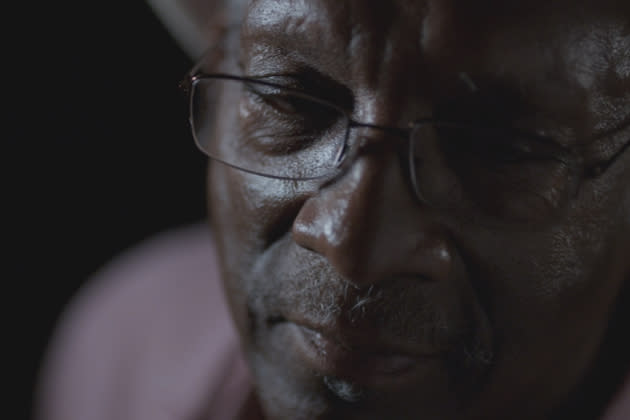‘A Crime on the Bayou’ Review: Civil Rights Advocate Critiques a Last Gasp of the Jim Crow Era
- Oops!Something went wrong.Please try again later.
- Oops!Something went wrong.Please try again later.

The recent centenary of the Tulsa Race Massacre, which was marked by a number of new documentary features among other tributes, struck many in large part because such a major event had been so successfully erased from U.S. history. Nancy Buirski’s “A Crime on the Bayou” shows the change it took nearly 50 more years to orchestrate, focusing on another instance of grave racially motivated injustice that, far from being buried, instead was loudly fought all the way to the Supreme Court.
With several major participants still alive to be interviewed, the documentary pays vivid testimony to the long-term impact this case had in forcing Southern states out of a Jim Crow era they’d clung to despite new federal laws. But in some ways, the film’s biggest strength is its use of archival materials. They’re woven together to provide an unusually palpable sense of just how much deeply-ingrained institutional and cultural bias needed to be overcome for the civil rights movement to make real headway. Shout! Studios is releasing this engrossing, flavorful document to limited theaters on June 18.
More from Variety
In 1966, Gary Duncan was a 19-year-old fisherman with a wife and newborn in Louisiana’s hurricane-vulnerable Plaquesmines Parish, which extends into the Gulf of Mexico. One afternoon that October, he intervened in a standoff between white students and two of his younger relatives outside a local school. While successfully dialing down the confrontation, he briefly put his hand on the elbow of one white youth.
That teenager turned out to be the son of the area’s kingpin, former judge Leander Perez, who’d bitterly resisted the school integration that federal mandates were now enforcing. The next day, his offspring claimed he’d been slapped, and Duncan was charged with “cruelty to a juvenile.” When that couldn’t stick, Duncan was simply arrested repeatedly on one dubious new charge after another — a typical means then of keeping Southern Blacks “in line.” (Lawyers note that clients of theirs were also taken into custody for crimes like “using florid language,” or for simply looking too well-dressed.) Backed by his infuriated mother, however, Gary refused to plead guilty, even when assured doing so would provide the “example” sought and let him off the hook.
The senior Perez, who’d ruled the area with an iron fist since 1924, was an outlandishly stereotypical political boss quite willing to air his anti-Black, antisemitic views on the national stage. (He’s seen discussing the “fact” of African Americans’ innate immorality with William F. Buckley Jr. on TV’s “Firing Line,” then heard elsewhere claiming their brains cannot develop due to “the thickness of the cranium.”) His fiefdom is remembered as a de facto dictatorship. To get legal representation, Duncan had to go to New Orleans, where northerner Richard B. Sobol had relocated in order to dedicate himself full-time to the civil rights advocacy begun on a summer-vacation volunteer basis.
Their fight wound up encompassing three different cases, two lodged against Perez himself. One had Sobol as the plaintiff — since Perez inevitably used his total control of local law enforcement and judiciary to have the lawyer arrested on bogus charges at one point.
This was precisely the kind of methodical racist intimidation that advocate and client sought to end in pursuing matters as far as the U.S. Supreme Court. In the process (which took several years), the two men became friends for life. Perez died of heart failure in 1969. Some years later, a text postscript informs, it was discovered he’d funneled some $80 million in oil royalties from government funds into his own pockets. (His heirs were sued for restitution.)
It’s a colorful story whose central figure, Gary Duncan, makes a contrastingly quiet, stoic impression. Still, he sets the stage by explaining that growing up in the area, “You stayed in your Black community” because “we didn’t have no rights” — there was no recourse against harassment, violence and prejudice that might be exerted for no special reason at all.
Buirski amplifies that notion effectively by using archival stills and footage not directly related to the case, showing southern Blacks manhandled by police, in otherwise all-white courtrooms, their polite protests greeted by furious white mobs. All this creates a context in which we feel rather than just being told that, as one civil rights lawyer puts it, much of the South then was a “totalitarian nation” where arbitrary and excessive punitive means kept underclasses “controlled.”
There’s some lyricism to Buirski’s visual evocation of place, as well as an occasional risk of pretentiousness in its structural devices (chaptered segments with quotes from Tolstoy, etc.). Music supervisor Doug Bernheim’s choice of preexisting tracks, heavy on Chet Baker and Miles Davis, are sometimes a little on-the-nose.
But these are minor stylistic quibbles in a documentary that transcends a familiar PBS-type template for something more atmospheric and interesting. Buirski makes good use of voice actors to read transcripts from trial proceedings. Scenes thus re-enacted edge toward “stranger than fiction” territory, underlining how ludicrously stacked against African Americans the justice system was.
Best of Variety
Sign up for Variety’s Newsletter. For the latest news, follow us on Facebook, Twitter, and Instagram.
